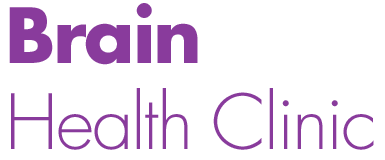
Central neuropathic pain (CNP) is a chronic form of pain caused by an injury to the central nervous system, including the brain and spinal cord. These injuries could be caused by stroke, physical trauma, or a disease, such as multiple sclerosis. The pain can start immediately after the injury, or it may develop some time later. Sadly, CNP often resists treatment with medications, leaving patients to suffer pain on a daily basis, affecting different parts of the body based on the site of the injury.
As a result of the limited efficacy of drugs, doctors and scientists have spent considerable time investigating non-pharmaceutical treatments that employ direct stimulation of the brain and/or spinal cord with mild electrical currents. Many people are familiar with TENS devices (standing for Transcutaneous Electrical Nerve Stimulation), portable units that provide mild shocks to affected nerves to reduce symptoms of pain. With central neuropathic pain, however, TENS treatment seldom results in long-term relief. Therefore, many other lesser known electrical techniques have also been tested.
A Review of Alternative Electrical Treatments for CNP
In this article, we will focus on treatments that are non-invasive. Both deep brain stimulation (DBS) and epidural motor cortex stimulation (EMCS) produce reductions in chronic pain for some patients, but they also involve surgical procedures that place electrodes inside the skull. For many people, these techniques are thus treatments of “last resort” if other therapies have failed. Instead, here we present three treatments applied directly to the scalp and that do not require surgical intervention.
Repetitive Transcranial Magnetic Stimulation (rTMS)
This technique induces electrical currents in the brain via strong magnetic coils that move the ions inside the brain cortex. Primarily, rTMS is used to successfully treat depression and anxiety. For chronic pain sufferers, rTMS has produced mixed results. Patients report pain reduction that lasts anywhere from only five minutes in some, to two weeks in others. Consecutive sessions tend to increase the amount of pain reduction. One benefit of this technique is that if a person responds favorably to rTMS, they will likely benefit from the more radical epidural motor cortex stimulation.
Transcranial Direct Current Stimulation (tDCS)
Using a very mild direct current (less than 2 milliamps), tDCS applies electrical stimulation to the brain via electrodes placed on the scalp. Duration of the treatment is usually twenty minutes per session, with sessions spread over five consecutive days. The pain relief is relatively effective for the majority of patients, with improvements lasting four weeks or longer. Unfortunately, for a minority of test subjects, the effects of tDCS are minimal or non-existent. Since direct current is used with this treatment, the direction of ion flow during tDCS is from one side of the skull to the other. Therefore, some scientists are investigating the pain reductions possible with the application of alternating current to the brain.
Transcranial Random Noise Stimulation (tRNS)
Direct current electricity moves in one direction only. Alternating current (AC) switches back and forth, flowing from one electrode to another and then reversing that flow. The measure of how often the flow changes direction is called the AC frequency. In the United States, household electricity uses a 60Hz frequency (Hz is short for Hertz). That means the current changes direction sixty times every second.
Researchers in Sweden studied the effect of using random frequency alternating currents of very weak strength for reducing chronic pain. What we know about tRNS compared to tDCS is that alternating current is far more effective at activating the nerves in the brain. And while many studies of tRNS have examined its effect on cognition and mental performance, few have researched the medical benefits related to chronic pain management. Therefore, the Swedish experiment explored the frequency ranges and signal strengths necessary to produce beneficial effects in a specific patient, making this report a case study. What they discovered regarding tRNS is significant for people with CNP.
First, pulses of very short duration (as little as thirty seconds) were sufficient to produce pain reductions. Frequencies applied were random, from 100-600Hz. Signal strength could be very low, from 200 to 1500 microamps (a microamp is only one millionth of an amp). Side effects were minimal, to none, with the worst effect being a brief headache. Finally, unlike tDCS, daily treatment sessions appeared to decrease the depth of pain reduction. As treatment continued over time, however, pain reductions lasted longer, up to one week.
The Benefits of Multiple Forms of Therapy
Before attempting invasive forms of treatment for CNP, some patients may do well to try non-invasive electrical current therapies first. While each mode of treatment benefited some patients, none of them benefited all. Therefore, by trying each of the available therapies, clients with CNP may succeed in finding a technique that is successful in reducing their chronic pain without the use of drugs.
For assistance in exploring the potential of non-invasive electrical therapy for central neuropathic pain, you can request the help available through the Brain Health Clinic in Sacramento. For more information, contact us by phone or online and request a free consultation to see if we might be of assistance to you.
